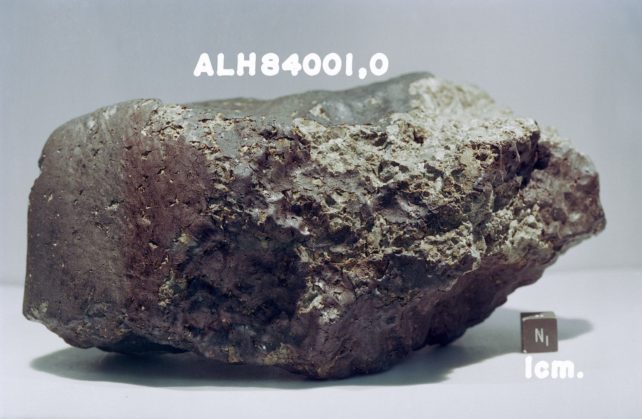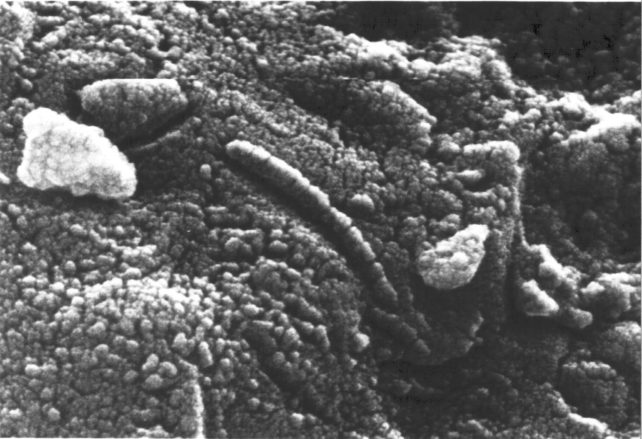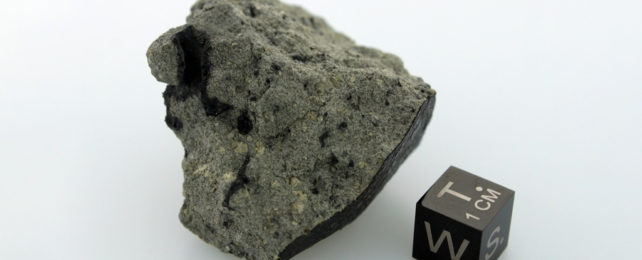In a recent study published in Sciences Advances, an international team of scientists led by the Technical University of Munich examined the Martian meteorite Tissint, which fell near the village of Tissint, Morocco, on 18 July 2011, with pieces of the meteorite found as far as approximately 50 kilometers (30 miles) from the village.
What makes Tissint intriguing is the presence of a "huge organic diversity", as noted in the study, which could help scientists better understand if life ever existed on Mars, and even the geologic history of Earth, as well.
"Mars and Earth share many aspects of their evolution," Dr. Philippe Schmitt-Kopplin, who is the director of the research unit Analytical Biochemistry at the Technical University of Munich, and lead author of the study, said in a statement.
"And while life arose and thrived on our home planet, the question of whether it ever existed on Mars is a very hot research topic that requires deeper knowledge of our neighboring planet's water, organic molecules, and reactive surfaces."

Organic molecules are molecules comprised of carbon atoms that are bonded to hydrogen atoms, but can also contain oxygen, nitrogen, and other elements, as well. The four primary classes of organic molecules include carbohydrates, proteins, nucleic acids, and lipids.
As seen on Earth, organic molecules are analogous to life, but the study notes that abiotic organic chemistry, non-biological processes, have been observed "in other Martian meteorites."
"Understanding the processes and sequence of events that shaped this rich organic bounty will reveal new details about Mars' habitability and potentially about the reactions that could lead to the formation of life," Dr. Andrew Steele, who is a staff scientist at Carnegie Science, a member of the Mars Sample Return Campaign Science Group for NASA's Perseverance rover, and a co-author on the study, said in a statement.
Dr. Steele has also conducted extensive research pertaining to organic material found in Martian meteorites, to include Tissint.
For the study, the researchers examined the entirety of Tissint's organic composition, and identified a "diverse chemistry and abundance in complex molecules ", as noted in the study, while also helping to unlock the past geologic processes within the crust and mantle of the red planet.
The researchers also identified a plethora of organic magnesium compounds never before observed on Mars, which could bring new evidence about the geochemical processes that shaped Mars' deep interior while possibly making a link between the red planet's mineral evolution and carbon cycle.
NASA's upcoming Mars Sample Return mission could provide even greater insights into both the organic and mineral composition of the red planet. Dr. Schmitt-Kopplin recently told Universe Today that such a mission could be just as successful as Japan's Hayabusa2 asteroid sample return mission since they "were able to show that meteorites reflect nicely the chemistry found in the return mission, we probably will be able to do the same."
Tissint has a total weight of 7 kilograms (15 pounds), and is currently the fifth meteorite classified as being of Martian origin, with a 2012 study estimating it was ejected from Mars approximately 700,000 years ago from some type of violent event.

Tissint draws some parallels with one of the most famous meteorites of Martian origin found on Earth, ALH 84001, which was the subject of much scrutiny in the late 1990s when it was initially believed to contain microfossils, findings that since been rendered inconclusive.
"ALH 84001 was one of the most studied Mars meteorites because it was found in Antarctica and thus was 'conserved' in the ice with low contamination," Dr. Schmitt-Kopplin recently told Universe Today.
"That time looking at molecules of life in the diverse chemistry of that meteorite and seeing in addition biological-like features in microscopy led to a too rapid conclusion of having found life on Mars."
What new secrets of Mars will Tissint, future meteorites, and the future samples returned from Mars teach us about the red planet? Only time will tell, and this is why we science!
This article was originally published by Universe Today. Read the original article.
